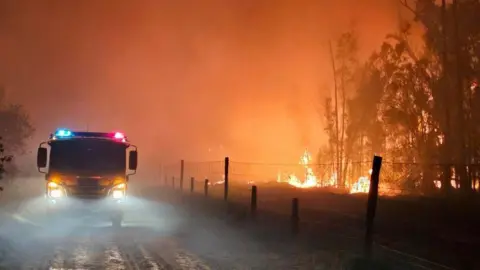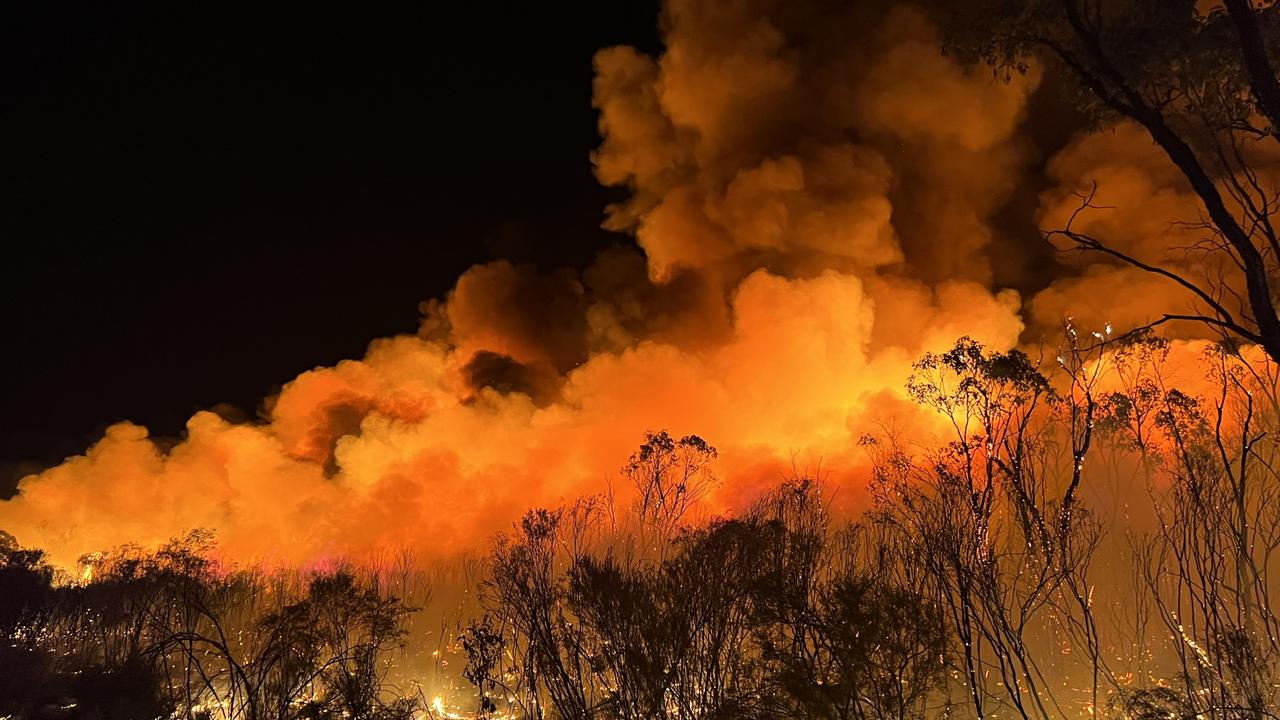Beyond Conformity: Enhancing Residential Property Safety with a Detailed BAL Report
Beyond Conformity: Enhancing Residential Property Safety with a Detailed BAL Report
Blog Article
Best Practices in Bushfire Management for Comprehensive Fire Defense
In the world of bushfire monitoring, the mission for thorough fire security requires a thorough strategy that includes various crucial facets. From strenuous danger analysis and strategic preparation to the implementation of effective greenery administration strategies, the spectrum of best methods is substantial and elaborate. Area interaction and education and learning play crucial functions in fostering durability and readiness, while very early detection and caution systems function as vital safeguards. Moreover, the seamless coordination of emergency action and evacuation strategies is necessary for guaranteeing the safety and well-being of individuals despite rising bushfire risks. As we navigate through the subtleties of these ideal techniques, an expedition right into the elaborate web of techniques and approaches waits for, guaranteeing a much deeper understanding of the multifaceted landscape of bushfire management for comprehensive fire defense.
Threat Assessment and Planning
In bushfire management for fire protection, the first step entails carrying out an extensive threat analysis and creating a detailed strategy to minimize possible hazards. Risk assessment is a critical process that includes recognizing, examining, and assessing potential risks that can result in a bushfire. This assessment takes into consideration various aspects such as weather conditions, topography, fuel tons, and human activities in the location. By recognizing these risks, fire protection authorities can focus on locations that are most prone to bushfires and allocate sources effectively.
Complying with the risk evaluation, the following vital action is to create a detailed plan to resolve the identified dangers. This strategy should outline strategies for avoidance, readiness, action, and recuperation in the event of a bushfire. It needs to likewise consist of measures for area communication, involvement, and discharge treatments. By having a distinct strategy in location, emergency situation solutions can act swiftly and effectively to protect lives, residential property, and the atmosphere during a bushfire break out. Efficient risk assessment and planning are fundamental parts of bushfire administration for ensuring extensive fire security.
Plant Life Monitoring Strategies
After performing a complete risk analysis and creating a detailed strategy for bushfire administration, the emphasis shifts to implementing efficient plant life administration approaches. Plant life management plays an important function in reducing the strength and spread of bushfires. One key technique is developing defensible space around homes by clearing combustible plant life and preserving a safe range between greenery and structures. This aids to produce a barrier area that can slow the progression of a fire and offer a much safer setting for firemens to safeguard properties.
Along with producing defensible room, prescribed burning is an additional crucial vegetation monitoring method. Prescribed burns include intentionally establishing fires under regulated conditions to reduce the accumulation of gas, reduce the possibility of high-intensity wildfires, and advertise ecological community health. By purposefully burning areas with excess vegetation, gas degrees are decreased, making it harder for fires to spread quickly and frantically.

Neighborhood Involvement and Education And Learning
Reliable neighborhood interaction and education and learning are vital components in developing a durable and aggressive method to bushfire monitoring. By including area members in the preparation and application of bushfire management strategies, stakeholders come to be active individuals in protecting their neighborhoods and homes. Community interaction cultivates a sense of common obligation and encourages homeowners to take possession of their safety.
Education plays an important role in gearing up people with the knowledge and abilities required to mitigate bushfire risks properly. Giving educational sources on fire avoidance, emptying treatments, and the significance of early discovery can considerably enhance community readiness. Enlightening locals on the local bushfire atmosphere, consisting of fire actions and threat factors, enables them to make educated choices throughout risky scenarios.
Via continuous interaction and education and learning efforts, neighborhoods can develop a collective understanding of bushfire dangers and work collaboratively to decrease the impact of wildfires. By cultivating a society of readiness and durability, area participants can enhance their capacity to respond efficiently to bushfire emergencies and shield both lives and residential property.

Very Early Discovery and Warning Equipments
Area engagement and education work as foundational pillars in developing positive bushfire administration techniques, laying the groundwork for the application of robust very early discovery and warning systems. Early discovery and caution systems are vital components in minimizing the impact of bushfires on areas and the environment. These systems include a variety of methods and innovations targeted at determining and notifying authorities and homeowners to possible fire outbreaks quickly and efficiently.
One crucial element of early discovery systems is making use of innovative surveillance innovations such as satellite images, drones, and weather condition stations to find signs of potential fire ignition. These technologies give real-time Check This Out information that can be examined to recognize fire-prone areas and activate very early cautions. In addition, the integration of community-based surveillance networks and automated sharp systems can boost the effectiveness of early discovery efforts by entailing citizens in reporting prospective fire threats and receiving prompt warnings.
Efficient very early discovery and caution systems count on a multi-faceted approach that integrates technical advancement, community involvement, and swift emergency response procedures to make sure the timely and worked with administration of bushfire cases. By buying these systems and fostering partnership in between stakeholders, communities can improve their durability to bushfires and lessen the associated threats.
Emergency Action and Emptying Plans
A extensive and well-coordinated emergency action and emptying plan is vital for properly safeguarding lives and home throughout bushfire incidents. These strategies need to be diligently crafted, thinking about aspects such as the topography of the area, the density of greenery, and the potential rate and direction of the fire's spread.
One important aspect of an emergency response plan is the establishment of clear communication channels to share prompt and exact details to homeowners and emergency situation -responders. This can include utilizing sirens, mobile notifies, social media, and neighborhood meetings to make sure that every person is educated and recognizes what activities to take.
Evacuation paths should be pre-identified and regularly maintained to ensure they are obtainable during emergencies. In addition, assigned discharge facilities should be developed to give sanctuary, clinical help, and assistance services to evacuees.
Normal drills and workouts are important to acquaint citizens with emptying procedures and check the efficiency of the plan. By continually evaluating and upgrading emergency situation action and emptying plans, neighborhoods helpful resources can enhance their readiness and strength when faced with bushfire dangers.
Final Thought
Finally, reliable bushfire management needs a comprehensive strategy that includes risk evaluation, vegetation administration, community engagement, very early discovery systems, and emergency situation feedback plans. By applying these best practices, neighborhoods can much better protect themselves from the damaging impacts of bushfires - BAL Report. It is important to prioritize proactive procedures to alleviate the threats posed by pop over to this web-site bushfires and guarantee the safety and well-being of individuals and communities in danger
After carrying out a thorough risk assessment and creating a thorough plan for bushfire administration, the focus changes to applying efficient vegetation monitoring methods.Reliable community involvement and education are crucial elements in building a proactive and durable method to bushfire administration. By entailing community participants in the planning and implementation of bushfire administration strategies, stakeholders come to be energetic individuals in safeguarding their homes and neighborhoods.Community engagement and education and learning offer as foundational columns in establishing proactive bushfire administration practices, laying the foundation for the implementation of robust early discovery and caution systems.In conclusion, effective bushfire administration calls for a detailed technique that consists of risk assessment, greenery monitoring, area involvement, early discovery systems, and emergency situation feedback strategies.
Report this page